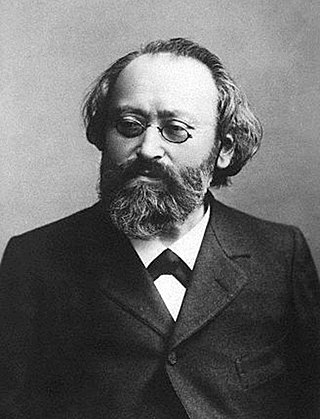
The Violin Concerto in D major, Op. 77, was composed by Johannes Brahms in 1878 and dedicated to his friend, the violinist Joseph Joachim. It is Brahms's only violin concerto, and, according to Joachim, one of the four great German violin concerti:
The Germans have four violin concertos. The greatest, most uncompromising is Beethoven's. The one by Brahms vies with it in seriousness. The richest, the most seductive, was written by Max Bruch. But the most inward, the heart's jewel, is Mendelssohn's.

Pablo Martín Melitón de Sarasate y Navascués, commonly known as Pablo de Sarasate, was a Spanish (Navarrese) violinist, composer and conductor of the Romantic period. His best known works include Zigeunerweisen, the Spanish Dances, and the Carmen Fantasy.
Carmen Fantasie is a virtuoso showpiece for violin and orchestra. The piece is part of Franz Waxman's score to the 1946 movie Humoresque for which he received an Academy Award nomination for Best Music, Scoring of a Dramatic or Comedy Picture. The music, based on various themes from Georges Bizet's opera Carmen and unrelated to the similarly titled work Carmen Fantasy by Pablo de Sarasate, was initially meant to be played by Jascha Heifetz. However, he was replaced by a young Isaac Stern for the film's recording of the score. Stern's hands can be seen in the close-up shots from the movie.
Piano Concerto No. 3 in C major, Op. 26, is a piano concerto by Sergei Prokofiev. It was completed in 1921 using sketches first started in 1913.
Violin Concerto No. 2 in D minor, Op. 22, by the Polish violin virtuoso, Henryk Wieniawski, may have been started in 1856, but the first performance did not take place until November 27, 1862, when he played it in St. Petersburg with Anton Rubinstein conducting. It was published in 1879, inscribed to his dear friend Pablo de Sarasate.

The Scottish Fantasy in E-flat major, Op. 46, is a composition for violin and orchestra by Max Bruch. Completed in 1880, it was dedicated to the virtuoso violinist Pablo de Sarasate.

Augustin Hadelich is an Italian-German-American Grammy-winning classical violinist.
Zigeunerweisen, Op. 20, is a musical composition for violin and orchestra written in 1878 by the Spanish composer Pablo de Sarasate. It was premiered the same year in Leipzig, Germany. Like his contemporaries, Sarasate misidentified Hungarian folk music with the "gypsy music" of the Romani people, and the themes in the piece are not of Romani origin, but were all actually adapted from Hungarian music pieces: for instance, the third section borrows a melody by Hungarian composer Elemér Szentirmay (1836–1908), and the last section uses a theme from Franz Liszt's Hungarian Rhapsody No. 13, in the rhythm of the csárdás.

Max Bruch's Violin Concerto No. 2 in D minor, Op. 44 was composed during 1877, following a failed attempt in 1874, and dedicated to the great Spanish violinist, Pablo de Sarasate. It was premiered in London by Sarasate, conducted by Bruch, on 4 November 1877.

Anton Bernhard Fürstenau was a German flutist and composer. He was the most famous virtuoso in Germany on his instrument and the most important Romantic flutist of the first half of the nineteenth century. His son Moritz Fürstenau (1824–1889), whom he later sent to study with Theobald Boehm in Munich, was one of his numerous students. Skeptical as to the technical advancements of the flute, he remained faithful to the nine key flute until his death.

The Carmen Suites are two suites of orchestral music drawn from the music of Georges Bizet's 1875 opera Carmen and compiled posthumously by his friend Ernest Guiraud. They adhere very closely to Bizet's orchestration. However the order of the musical allusions are in reversed chronological order, and do not adhere to the operatic versions entirely, although the Suite is directly inspired by Bizet's opera.
Sonatas, duos and fantasies by Franz Schubert include all works for solo piano by Franz Schubert, except separate dances. They also include a number of works for two players: piano four hands, or piano and a string instrument.

Bolero is a Spanish dance in 3/4 time popular in the late 18th and early 19th centuries. It originated from the seguidilla sometime between 1750 and 1772, and it became very popular in Madrid, La Mancha, Andalusia and Murcia in the 1780s. Bolero was performed as a solo or partner dance with a moderately slow tempo, accompanied by guitar and castanets, and with lyrics in the form of the seguidilla.
From March 1816 to August 1817, Franz Schubert composed four violin sonatas. All four were published after the composer's death: the first three, D 384, 385 and 408, as Sonatinas in 1836, and the last one, D 574, as Duo in 1851. Schubert composed two more pieces for violin and piano, in October 1826 and December 1827 respectively: a Rondo, D 895, which was published during the composer's lifetime (Op. 70), and a Fantasy, D 934, which was premiered in January 1828, less than a year before the composer's death.
In 1816, Franz Schubert composed his first three violin sonatas, D 384, 385 and 408. They were published after the composer's death as Sonatinas in 1836. These sonatas breathe an intimate atmosphere, requiring relatively little virtuoso bravura from their performers.

The Spanish Dances are a collection of eight pieces for violin and piano composed by Pablo de Sarasate between 1877 and 1882 and published in four books, each book combining two dances contrasting in rhythm and character. They are among Sarasate's best known works.
The Violin Sonata No. 2 in E♭ major, Op. 102, was written by Camille Saint-Saëns from February to March 1896, and premiered on 2 June 1896 in Paris.









